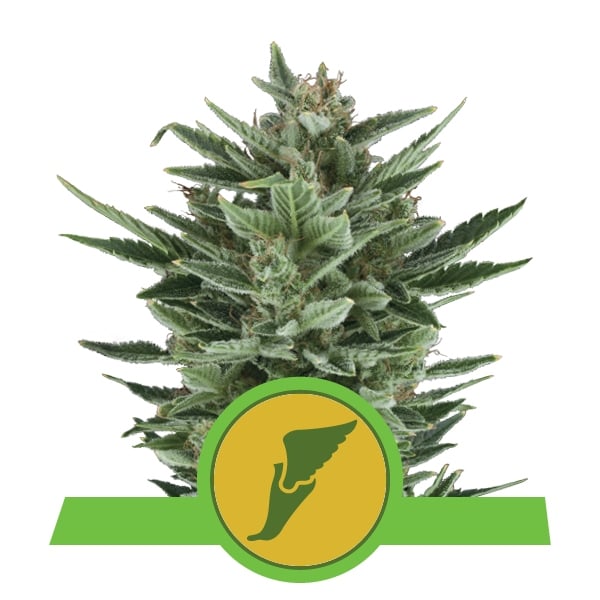.
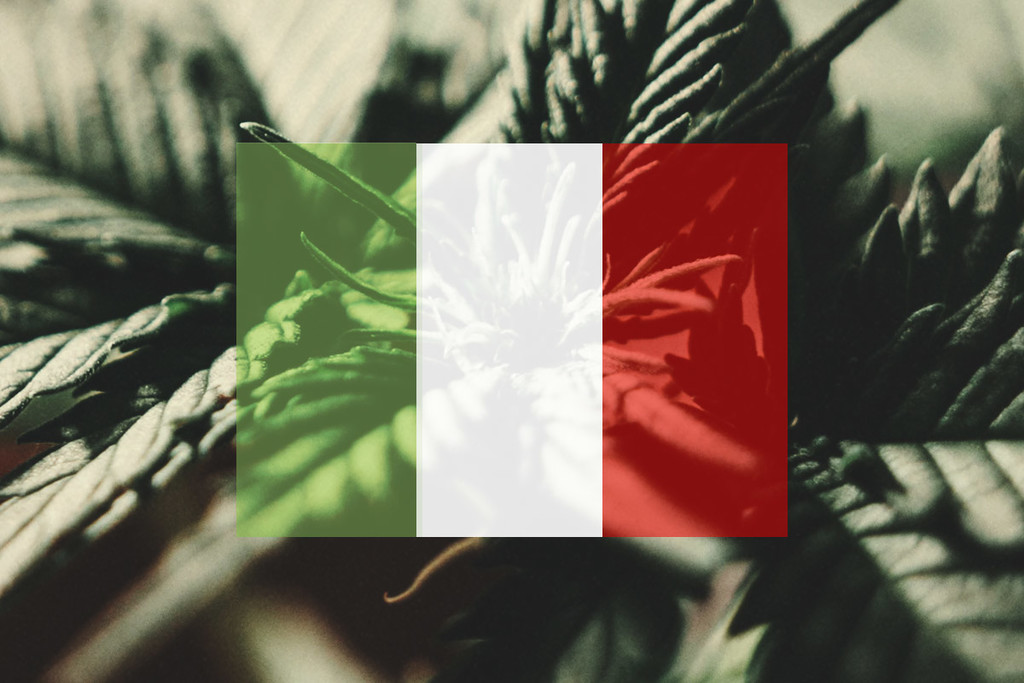
How To Grow Cannabis Outdoors In Italy: Month By Month
The whole Italian peninsula has always been a perfect place for growing. Cannabis cultivation is active throughout the country, but only EU-registered hemp is legal. Keep on reading to check out our guide on growing cannabis outdoors in Italy this 2024.
How to grow cannabis outdoors in Italy, month by month this 2024.
Contents:
- 1. Growing cannabis in Italy
- 2. Is weed legal in Italy?
- 2.a. Medical legality
- 2.b. Grow stores and “cannabis light”
- 3. A guide on growing cannabis outdoors in Italy
- 3.a. Climate regions
- 4. Growing cannabis outdoors in Italy: month by month
- 5. Pros and cons of growing cannabis in Italy
- 6. Top RQS strains for outdoor growing in Italy
- 7. In conclusion: Italy is a great place for cannabis growers
Italy used to be one of the main hemp producers in the world until the country was hit by post-war prohibition. During the last few years of the cannabis culture renaissance, hemp cultivation has ramped up again, adding some local landraces to the list of EU-approved industrial hemp strains, together with the legal “cannabis light” hype.
Anyhow, both small and large-scale illegal cannabis outdoor operations never really stopped since the 1970s, particularly in warmer southern regions.
GROWING CANNABIS IN ITALY THIS 2024
This is a country with hundreds of microclimates. Fortunately, most of its climate zones are good for growing cannabis. Some of them are perfect. However, the hilly nature of this narrow Mediterranean peninsula, with a continental part, mountains pretty close to the sea, and various local and regional winds, requires a careful choice of growing plot. One hill might be perfect for growing, while the hill just beside it might not.
IS WEED LEGAL IN ITALY?
It’s not. This doesn’t mean you will be sent to jail for a few grams, or even a few plants. However, you might end up losing time, money, and maybe your driver license, according to a number of factors.
The actual law does not state home growing with “rudimentary techniques” as a crime, assuming the operation is just for personal use. This means if you get caught with a few plants, you will go on trial and you’ll need to convince a judge they were just for personal fun. Your job will be easier if cops didn’t find any scale, cash, too many high-wattage lamps, plastic bags, funny chats on your phone, criminal records, and so on. Moreover, you better show the court you have a legitimate income. To be safe, get a good lawyer with experience in these kinds of “crimes”.
However, like many other countries, Italy is gradually opening up to the idea that cannabis is not such a bad thing.
MEDICAL LEGALITY
Thanks to progress in both legislation and common medical practices, it’s not too complicated to obtain a prescription for medical cannabis in Italy, at least for a limited amount of time and grams. The problem is whether legal medical cannabis is cheaper, better, and more accessible than the dealer’s best stuff or, better yet, your own crop. In many cases, the answer is “no”.
GROW STORES AND “CANNABIS LIGHT”
Grow stores in Italy operate within a legal framework. You can buy whatever lamp or specific nutrients or paraphernalia you need for cannabis use or cultivation in one of the hundreds of grow stores around the country. Here you can also buy “cannabis light” and CBD products.
Cannabis light is a commercial definition for industrial hemp with less than 0.2% THC. This tasty hemp has experienced great success in recent years, with an initial market of hundreds of thousands of customers, and hundreds of growers and dealers trying to set up a supply chain within this “gray area” of the law.

A GUIDE ON GROWING CANNABIS OUTDOORS IN ITALY
All common pests are represented in Italy. Spider mites, thrips, whiteflies, aphids, nematodes, caterpillars, oidium, and any strain of fungus and mold. Ask local growers for the most pernicious, and get prepared for the fight with organic methods. All kinds of weather are represented as well.
Tap water is suitable for growing in most parts of the country. In some regions, the amount of chlorine might require you to let the water rest in a container overnight. In most urban areas, water pH is slightly alkaline, thus a little “pH down” might be needed to obtain the perfect acidity for your cannabis plants. Make sure to gather information on any water source other than public water before using it for your crop. Also, make sure your operation is well-hidden, and stay safe during your trips in and out of the garden.
CLIMATE REGIONS
The Italian peninsula can be climatically divided into six regions. Cannabis can thrive in most of the regions, but the grower must consider potential climate issues in each one before buying seeds.
ALPINE REGION
The extreme northern highlands are beautiful, yet not suitable for growing without a properly heated greenhouse. On the bright side, the air and water are so pure, and the sun is powerful.
SUBALPINE REGION AND PIANURA PADANA
The Po river northern flatland has long winters (getting shorter with climate change) and hot summers. Humidity is pretty high; precipitation is moderate. Here, cannabis can be cultivated with just some caution, as cold days, rain, and thunderstorms are to be expected in March and April. From May to August, thunderstorms in the afternoon are frequent in the subalpine region. Milan, Turin, and Bologna are the main cities in this climate area.
LIGURIA AND TUSCANY COASTAL REGION
Here you’ll find warm winters and hot summers, except in some inland hilly areas where nighttime temperatures can be much lower than on the coast. Fall can be moderately rainy. Other than that, this is a perfect climate for growing cannabis. The westerly part of the region, close to the French border, gets the most balanced weather, with mild winters, cool summers, and not too many storms. Genoa is the main city in this region, with hundreds of small towns along the seaside that are perfect for growing cannabis, if houses and land weren’t so expensive.
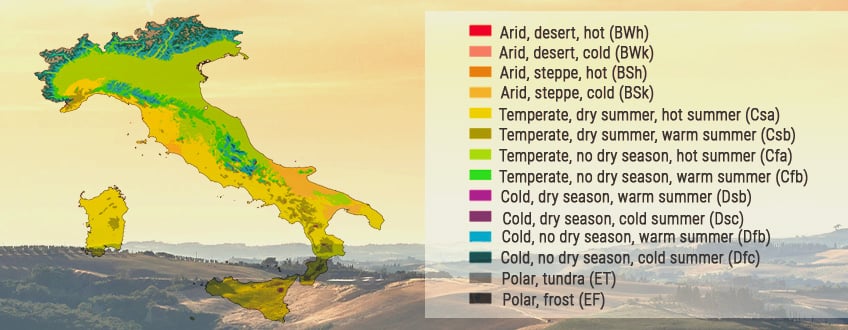

NORTH ADRIATIC REGION
The eastern coast of the peninsula is a temperate area as well, with a colder and damper climate than north-central coastal regions on the western shore, such as Liguria and Tuscany. In the northern part of the Adriatic region, cold winds from Eastern Europe and thunderstorms are also more likely, while the southern shore is exposed to humid southerly winds. Weather forecast at hand, the wise grower will protect their crop accordingly. Venice, Ravenna, and Ancona are the main cities in this region.
APENNINES REGION
This is the internal “backbone” of the peninsula. Perugia, L’Aquila, and Potenza are cities in this climate region. Winters are cold and damp, particularly in the northern part of the region. Summers are warm and sunny, with chances of thunderstorms in the afternoon. The grower who avoids higher hills or plots exposed to cold winds will be rewarded with balanced temperatures and rainfall, even if the growing season is shorter than in coastal regions.
MEDITERRANEAN REGION AND THE MAIN ISLANDS
This is the typical southern Mediterranean climate, with mild winters and long, hot summers. Rome and Naples are in this climate region. Bari, Reggio Calabria, Palermo, and Cagliari are other main towns. This region is perfect for growing cannabis almost year round, assuming you sow the right strain in the right hidden plot.
In southern Italy, drought conditions should be taken into account. Sicily, and particularly Sardinia, are windy in the coastal zones. A protected space and a reliable source of good-quality water must be ensured before buying seeds. In the highlands, the temperature drops by a few degrees, falling within the climate of cooler regions.
GROWING CANNABIS OUTDOORS IN ITALY: MONTH BY MONTH
Without further ado, let’s break down the monthly conditions you can expect during your Italian cannabis grow.
MARCH
• AVG day length March 1st: 11h 16m
• AVG temperature: 6–17°C
Rainfall is scarce and temperatures are generally low. Growers with a greenhouse or a suitable indoor space can germinate their seeds in late-March and start their seedlings/young plants off in protected conditions.
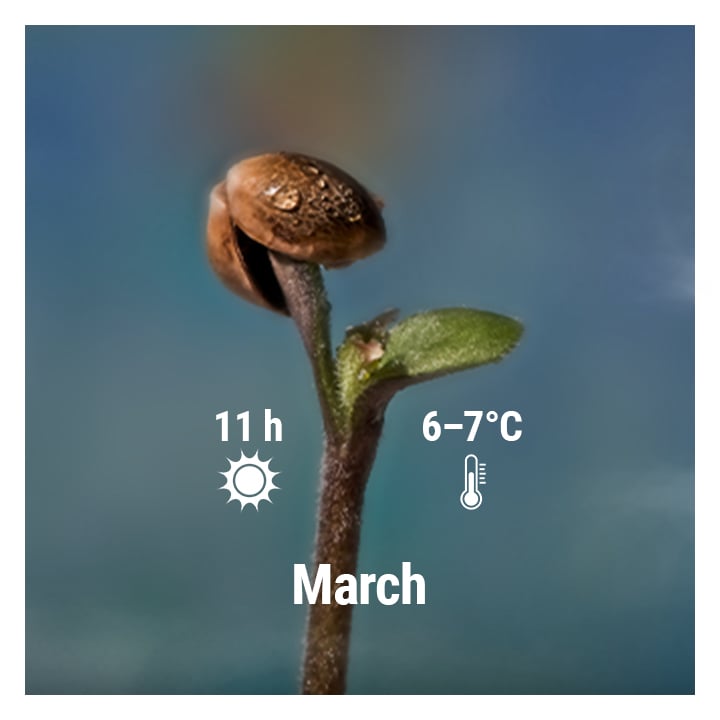
APRIL
• AVG day length April 1st: 12h 43m
• AVG temperature: 9–19°C
Greenhouses are still needed in northern and Apennines regions. The climate is damp with risk of thunderstorms or heavy rain. Still too early for most plants to be outside. Growers in warmer regions can begin exposing their plants to outdoor conditions. Use white pots: light-colored pots reflect light and heat instead of accumulating it. Don’t boil your plant’s roots in black pots during Mediterranean summers!


MAY
• AVG day length May 1st: 14h 03m
• AVG temperature: 13–24°C
Greenhouses might be needed in some cooler regions, with risk of heavy rain close to the mountains and hills. Balanced temperatures in all other regions. Most growers can confidently move their plants outside under the sun. In the south, food-grade water-absorbent polymers can be blended with the soil to deliver much-needed water during the drought conditions in August.
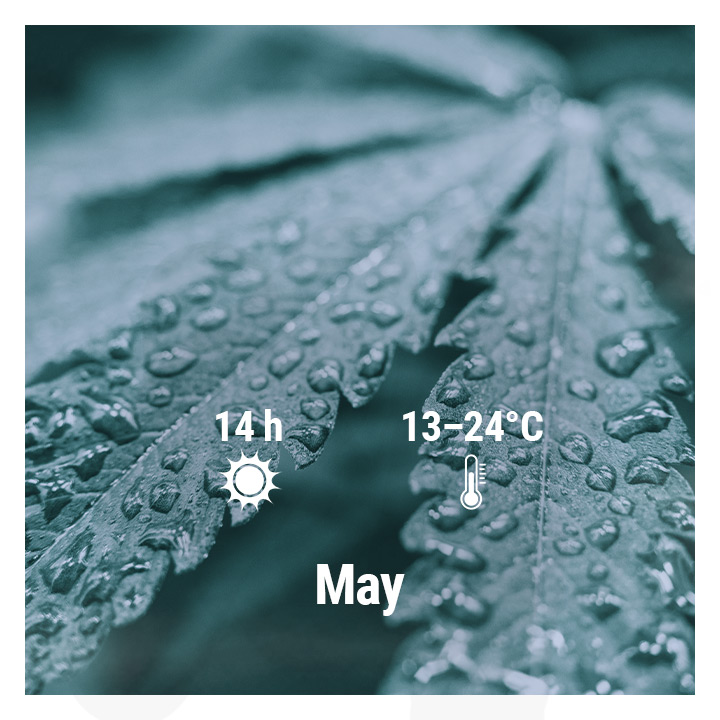
JUNE
• AVG day length June 1st: 15h 01m
• AVG temperature: 17–28°C
Balanced temperatures in all regions. Scarce rainfall and some risk of drought in southern regions. This is a time for robust vegetative growth. Prepare for pests and use plant training techniques to keep your grow obscured from view while optimising yields. Use appropriate veg nutrients and let your plants gain mass.

JULY
• AVG day length July 1st: 15h 10m
• AVG temperature: 19–31°C
Scarce rainfall, but a risk of drought in southern regions. In the Alpine and subalpine regions, thunderstorms in the afternoon are frequent. Continue training as necessary. Make sure your plant doesn’t take on too much water to avoid root rot and other nasties. In the drought south, create some artificial shade. Build structures with fabric or plastic to protect your plants from sunlight during the hottest hours of the day.


AUGUST
• AVG day length August 1st: 14h 24m
• AVG temperature: 19–31°C
No rainfall, but a risk of drought in southern regions. Water your plants early in the morning. In the Alpine and subalpine regions, thunderstorms in the afternoon are frequent. Short thunderstorms should be expected in all regions. Most plants are flowering now, making humidity and moisture more significant threats. Plant in containers if possible so you can move plants inside if a storm hits. Cease training and make sure you’re using flowering nutrients.
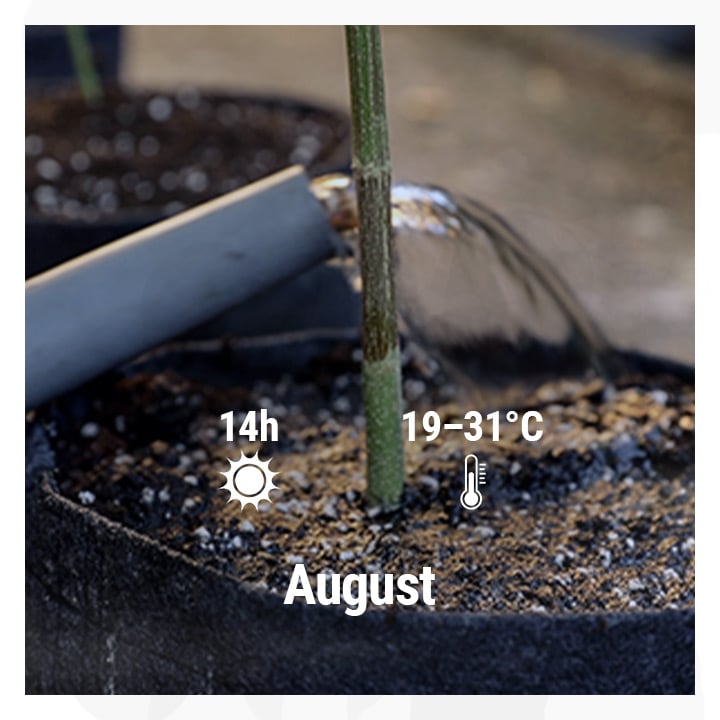
SEPTEMBER
• AVG day length September 1st: 13h 07m
• AVG temperature: 15–27°C
In the Alpine and subalpine regions, thunderstorms in the afternoon are frequent. Thunderstorms are to be expected in all regions. At the end of the month, growers in northern regions should start harvesting or protecting their plants from the elements.
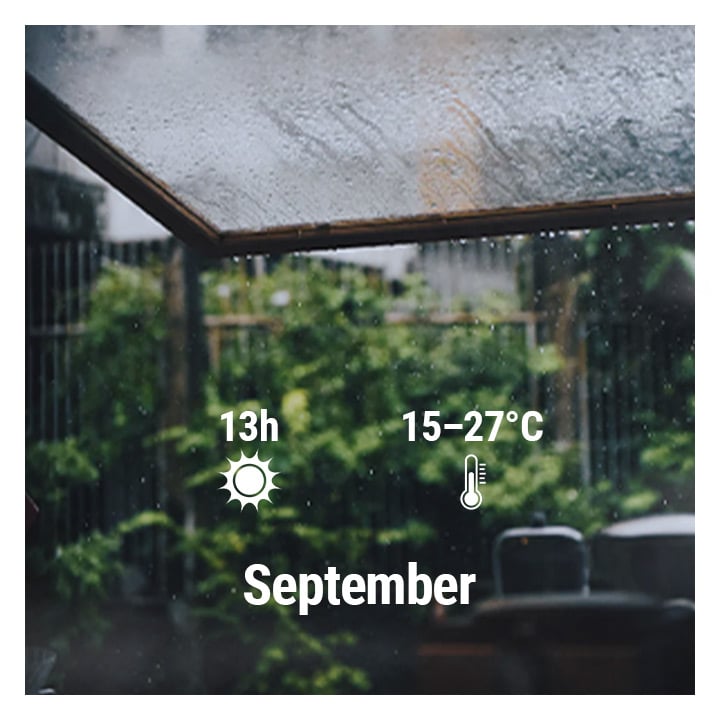
OCTOBER
• AVG day length October 1st: 11h 44m
• AVG temperature: 12–22°C
Thunderstorms and low temperatures are possible in all regions, particularly the ones close to the mountains at all latitudes. Greenhouses or tarpaulins might be needed to protect your harvest. At this point, it’s more important to save your stash than it is to let plants mature under bad conditions.
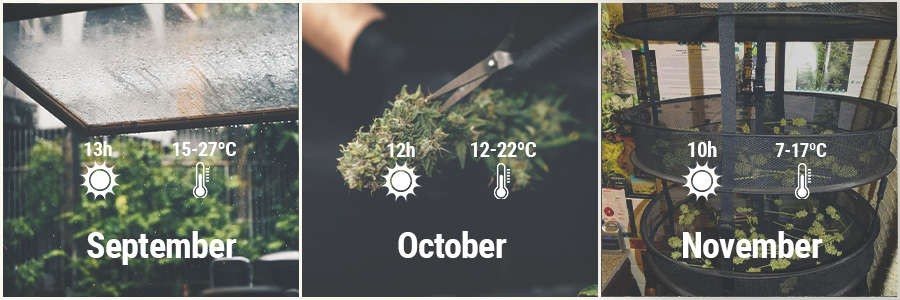

NOVEMBER
• AVG day length November 1st: 10h 21m
• AVG temperature: 7–17°C
Rain and low temperatures are possible in all regions. Greenhouses or tarpaulins might be needed to protect the harvest.
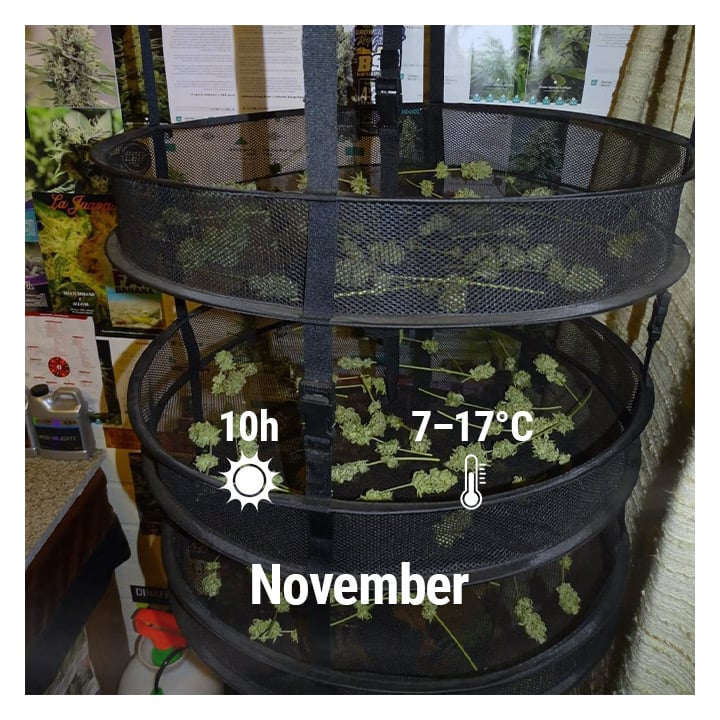
PROS AND CONS OF GROWING CANNABIS IN ITALY
It’s pretty clear that the only real obstacle when growing cannabis in Italy is the law. Still, there are always distinct pros and cons to cultivating weed in different locations:
Pros
• In most parts of the country, weather and soil are perfect for growing cannabis, together with any other veggie.
• Water and other materials or tools you might need for growing are readily available in all regions.
• Cannabis law is not one of the most repressive in the world; it’s illegal, but you won’t necessarily go to jail.
Cons
• It is illegal.
• The country is small and densely populated. Finding a good hidden place to grow might not be too easy.
• In regions with the most extreme temperatures or rainfall, some caution and proper protection are required.
TOP 3 RQS STRAINS FOR OUTDOOR GROWING IN ITALY
With such a variety of climates, make sure you carefully select strains that adapt to your region's average temperature and specific conditions. Growers in northern regions (coastal areas included) and highland areas might want to choose strains that resist cold temperatures and are ready to harvest by the beginning of October. Lucky southern growers can pick strains with longer life cycles; however, they might have to deal with heat stress and water scarcity.
• Quick One
Derived from the notorious autoflowering strain Lowryder, Quick One is the perfect autoflower for northern regions with short summers. She takes only 8–9 weeks to go from seed to harvest and is easy to hide as she won’t get taller than 50–60cm. Her yield can reach and surpass 150g/plant, if grown with care. The taste is herbal and citrusy, with a mellow physical effect.
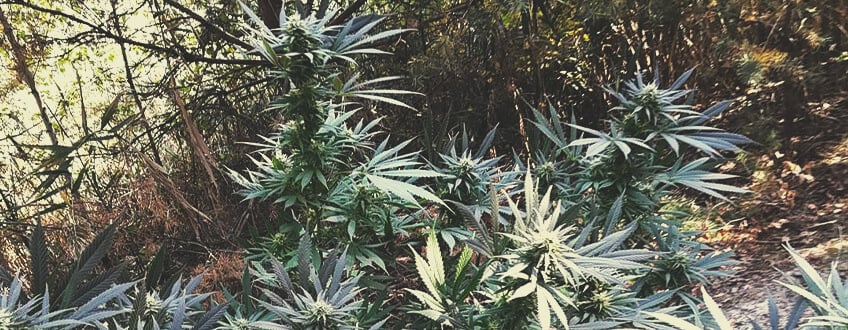
| Quick One | |
| Strong Indica x Ruderalis | |
| 275 - 325 g/m2 | |
| 50 - 60 cm | |
| 5 - 6 weeks | |
| THC: 13% (aprox.) / CBD: Low | |
| 10% Sativa, 60% Indica, 20% Ruderalis | |
| 100 - 150 g/per plant (dried) | |
| 60 - 100 cm | |
| 8 - 9 weeks after germination | |
| Physical |
Quick One
| Strong Indica x Ruderalis | |
| 275 - 325 g/m2 | |
| 50 - 60 cm | |
| 5 - 6 weeks | |
| THC: 13% (aprox.) / CBD: Low |
| 10% Sativa, 60% Indica, 30% Ruderalis | |
| 100 - 150 g/per plant (dried) | |
| 60 - 100 cm | |
| 8 - 9 weeks after germination | |
| Physical |
• Amnesia Haze
This legendary sativa hybrid thrives in dry and sunny climates. She is also great for growing in hot and humid conditions as her looser flower formation allows for greater tolerance to excessive humidity. Her high THC content, yields of up to 700g/plant, and sweet, citrusy flavor are the rewards for waiting until the end of October.

| Amnesia Haze | |
| Original Amnesia Haze | |
| 600 - 650 gr/m2 | |
| 80 - 140 cm | |
| 10 - 11 weeks | |
| THC: 22% (aprox.) / CBD: Medium | |
| 70% Sativa, 30% Indica, 0% Ruderalis | |
| 650 - 700 g/per plant (dried) | |
| 175 - 210 cm | |
| Late October | |
| Extremely high, long-lasting, body relaxing |
Amnesia Haze
| Original Amnesia Haze | |
| 600 - 650 gr/m2 | |
| 80 - 140 cm | |
| 10 - 11 weeks | |
| THC: 22% (aprox.) / CBD: Medium |
| 70% Sativa, 30% Indica, 0% Ruderalis | |
| 650 - 700 g/per plant (dried) | |
| 175 - 210 cm | |
| Late October | |
| Extremely high, long-lasting, body relaxing |
• Fruit Spirit
Another tall and airy sativa perfect for growing outdoors in warm, dry areas, and in humid coastal Mediterranean regions as well. She can reward the grower with more than 500g/plant of uplifting flowers, ready to harvest in early October.
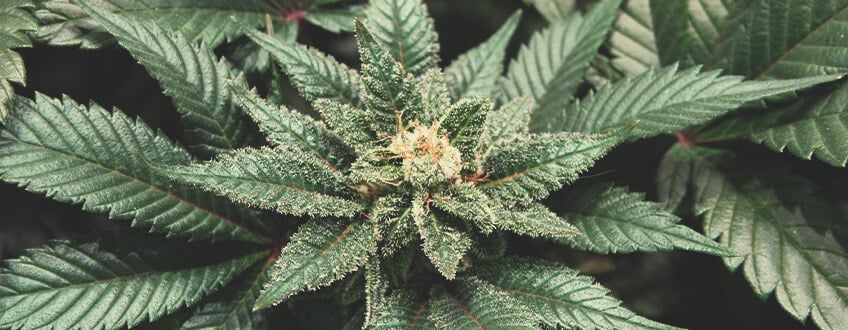
| Fruit Spirit | |
| Blueberry x White Widow | |
| 375 - 425 g/m2 | |
| 80 - 120 cm | |
| 7 - 8 weeks | |
| THC: 18% (aprox.) / CBD: Low | |
| 60% Sativa, 40% Indica | |
| 475 - 525 g/per plant (dried) | |
| 175 - 220 cm | |
| Early October | |
| High (sweet taste) |
Fruit Spirit
| Blueberry x White Widow | |
| 500 - 550 g/m2 | |
| 80 - 120 cm | |
| 7 - 8 weeks | |
| THC: 18% (aprox.) / CBD: Low |
| 60% Sativa, 40% Indica | |
| 500 - 550 g/per plant (dried) | |
| 175 - 220 cm | |
| Early October | |
| High (sweet taste) |
Still haven't found the strain for you? Here you can find a good selection of strains based on different climate zones.
IN CONCLUSION: ITALY IS A GREAT PLACE FOR CANNABIS GROWERS
Italy is a perfect place to grow cannabis. From small towns to big cities, from industrial warehouses in the north to hidden countryside plots in the south, it’s all packed with indoor and outdoor operations of any scale. Each one of these growers knows the risks involved until the law is changed, and only time will tell when this progress is made.



























